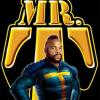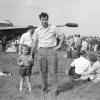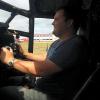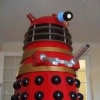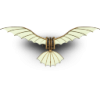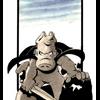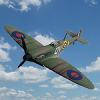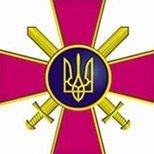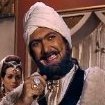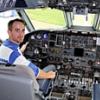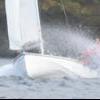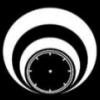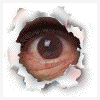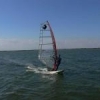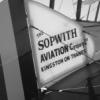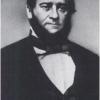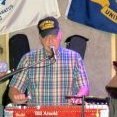Leaderboard
Popular Content
Showing content with the highest reputation on 02/04/17 in all areas
-
Hiya Folks, Yes I know,.....another Harvard,..... this time a Mk.III if the Fleet Air Arm based with the Station Flight at RNAS Hal Far, Malta in the late 1940`s. Here is the photo that started it all off; And here is my rendition in model form; From the photo it appears that the fabric covered control surfaces still wear camouflage finish along wth some of the engine ancillary bay side panels, so they either came from another aircraft and have been refitted to this natural metal aircraft,...or have yet to be doped/painted silver to match the finish of the rest of the aircraft after it has been stripped to bare metal, although judging by the position of the fuselage roundel and the fact that the narrow North American company serial `font' is in situ it would seem that it was in fact delivered in a natural metal scheme. For the silver finish on the model I used rattle can Tamiya Bare Aluminium while everything else was brush painted using Humbrol acrylics which were slightly thinned down to make them easier to apply. After a coat of gloss varnish for the decals, the model was brushed using satin varnish to slightly dull down the sheen. Thanks to my mate Ian Campbell for the artwork which allowed the decals for the 911 codes to be printed and also for providing me with a spare prop and wheel to replace those missing from my kit,......cheers fella! All the best Tony23 points
-
Hi, everybody. On my simple point of view, "Tupolev" - Tu-154 is the most sexy civil aircraft. I like it most of all. The model produced by "Zvezda" is cool. I just made from scratch some small parts. The decal is by "Ascencio" (it is also perfect). That's it.19 points
-
Just finished this in the nato warsaw pact group build, out of the box except for eduard mig 21 seatbelts ,scratch built ladder, and a couple of pilot figures by aires,and airscale cockpit decals ,the model built up really well, there were a few sink marks ,and a bit of flash otherwise the general fit was good ,the inspiration for the weathering came from a picture off the net of red 03 at hvalynka aerodrome in the 70s below ,it was my first go at a whole aircraft in alclad, Thanks everyone for moral support and enthusiastic comments, and those who contributed with hard to find links and other info, Cheers Glynn This one was taken just before it was finished19 points
-
Hello! I started building this kit on March, 2015 and just finished it last January. It is a really good model (lot of details, wonderful surfaces) and the little problems are now solved with the new edition. Swiss colours add a flashy touch on the classic scheme... and my wife is from this nice country , so I decided to paint this Bf 109 this way. Some pictures: If you want more pics of the finished model, follow this link: http://fighters.forumactif.com/t81668-chocolat-fromage-etc-etc-enfin-l-oiseau-en-photos The work in progress thread is here (I'm struggling with the pictures links): I am really happy to share with you my first finished 1/48 kit after a loooong pause with this hobby. Comments and critics are welcome of course! Cheers PZR14 points
-
Hi Folks The last Meteor F8 for a while, still got an NF11and T7 on the go so start despairing now.Still need to do another couple from these sheets at sometime in the future although the kit seems to disappearing fast. This one is another with the excellent Marmaduke decals applied depicting the CO's aircraft from 19 Squadron. Painted as usual with Xtracolor HSS. Cheers Ian14 points
-
Hiya Folks, I`m on a bit of a roll at the moment and here is a Hurricane which I have wanted to depict for some time, HL791 `Uncle Joseph' from 135 Sqn flown by Kiwi Pilot Officer `Hugh' Dean RNZAF in the defence of India and in support of the Arakan offensive. A handful of Hurricane and Mohawk squadrons helped to hold the fort in this theatre until more units and more advanced equipment could be spared and I have always been fascinated by these units and the men who were part of them. This is my small homage to them and men like Pilot Officer Dean who was killed in action on the 31st May 1943 when six Hurricanes were sent up to intercept 16 Japanese aircraft over the Allied lines in the Arakan. During May Dean had already flown 31 operational sorties during 50 operational flying hours (not including transit flights to forward airstrips nearer to the Arakan front) and he had led A Flight on many occasions, During one of these sorties he had single handedly taken on 12 Japanese bombers. Like many of the pilots defending the Army on the ground Dean must have been exhausted and it is thought that he was bounced by enemy fighters above him which he had not seen. The wreck of his Hurricane was found in the Burmese hills and he was buried alongside it. Now I`m no lover of `Uncle Joe' Stalin or the Communist`s, far from it as the man was probably an even worse evil tyrant than Hitler,..... but he was portrayed by British wartime propaganda as an ally and many RAF aircraft were adorned wth similar slogans. As usual the model was brush painted and the decals came from a Montex mask set, with the roundels etc coming from the spares box as I`m not brave enough to use the masks when brush painting!! Cheers Tony12 points
-
Well you just can't have enough doras ! This is an older project but i finally managed to take some photos . Very nice and simple model . I added the rivets to make it more interesting . Hope you like it ! ( until the next dora ! ) IMG_20170304_181530 by Dionyssis Vacalas, on Flickr IMG_20170304_181541 by Dionyssis Vacalas, on Flickr IMG_20170304_181609 by Dionyssis Vacalas, on Flickr IMG_20170304_181557 by Dionyssis Vacalas, on Flickr IMG_20170304_181619 by Dionyssis Vacalas, on Flickr12 points
-
Finished up today despite the issues described in the build log...... 1/72 scale Bedford QLR J145 Radio body as per Geoff Lacey drawings...... ATB Sean11 points
-
The Martin B-10 was a revolutionary advance in bomber design when it was offered to the United States Army Air Corps in 1932. Its first active service use by the Army Air Corps, however, was quite pacific: carrying air mail for the Post Office. Shortly after the Army Air Corps began operating the biplane Keystone bomber in quantity, its procurement planners started casting about for a more modern bomber. Beginning in 1929, various aircraft manufacturers offered their new bomber designs to the Army. Ford produced a militarized version of its well-regarded Trimotor transport. Fokker and Douglas put forward bomber variants of machines originally intended as twin-engined heavy observation planes. Boeing proffered a twin-engined development of its famous all-metal Monomail transport, with a slim, semi-monocoque fuselage and retracting landing gear, which became a favorite of the aviation press, who dubbed it 'The Death Angel'. The Martin company initially proposed a twin-engine biplane, which was rejected out of hand. Martin then came back with a twin-engined monoplane, albeit one with fixed landing gear and uncowled engines, which was obviously inferior to Boeing's design, and was rejected accordingly. The Martin company returned once more to the drawing boards and emerged with the Model 123 (pictured above). This was a vast improvement. Its motors were enclosed in cowlings, its landing gear retracted, and the Martin design went Boeing's one better with a deep fuselage providing capacious internal stowage for its bomb load. This gave Martin's offering a decisive edge in speed over the Boeing prototype, which carried its bombs slung below the center sections of its wing. There were problems with handling the Martin, however, and at a speed of nearly 200 mph, open cockpits presented problems of crew efficiency. This was partially addressed in the XB-10 prototype, which enclosed the gun position at the nose. Eventually, the wing-span was increased to 70 feet, 6 inches, which improved flying characteristics, and both the pilot's and navigator's cockpits were fully enclosed. With more powerful motors than the prototype's into the bargan, the machine could now achieve a speed of 207 miles per hour in level flight at 6,000 feet. In this form, the Martin design was designated the YB-10, and the company given a developmental contract for 14 examples. Delivery of Martin's new 'Air Power Wonder' (as a leading officer of the Army Air Corps described it) began in November, 1933, when the first YB-10 was accepted by the Materials Division at Wright Field. The purpled style of the times is infectious, when one reads a good deal of it, and some of it survives into present day descriptions of the Martin bomber. It is generally described still as 'all metal', though in fact the rear third of the wings was fabric covered. A metal structure covered with fabric was not uncommon at the time, and such a design was often then described as 'all metal' as opposed to wooden, or mixed wood and metal, but the machine was hardly 'all metal' in the sense of commercial transports like the roughly contemporaneous Douglas DC-1 or Lockheed Electra or Boeing 247. These all employed aluminum stress-skin construction for all structural elements. While some of the Martin's covering employed this technique, some was old-fashioned corrugate sheet. The gun position in the Martin's nose is generally called a turret, but enclosed gun ring would be closer to the mark, for the gun was still traversed and elevated manually, rather than by hydraulic or electric power. Nor, for that matter, is it clear whether the quoted maximum speeds were achieved with a weight of bombs or not. Still, gilded though the lilly was, it remained an extraordinary advance in applied technology for military purposes in its time. Probably more than any other single aircraft, Martin's speedy bomber gave life and legs to the doctrine that 'the bomber will always get through' which would dominate Army Air Corps theorizing throughout the decade before World War Two. While newly arrived YB-10s were being put through their paces in the skies of Ohio, in Washington D.C. a long simmering scandal concerning allocation of contracts for transporting air mail was coming to a boil. What bubbled up out of public hearings in the Senate during January of 1934 would come to scald the Army Air Corps badly. ('Liberty' DeHaviland DH-4b mail plane conversion operated by the Post Office circa 1920) Transport of mail by air in the United States had begun as a wholly government service, flown first by Army Air Service personnel and equipment between Washington D.C. and New York, and then expanded nationwide by a fleet of aeroplanes operated by the Post Office itself. During the Coolidge administration, the Post Office air fleet was sold off, and contracts for transport of air mail offered to private firms. The intent was to foster development of commercial aviation, and the aviation industry in general. The rates paid the companies were based on weight and distance, and were much in excess of what was charged for air mail postage. The system conduced to a good deal of sharp practice by the contractors, who found various ways to game the rates --- in one widely reported instance, an air mail contractor sent out a mass of Christmas cards by air mail, which it carried itself, and was paid twice what it had put up for postage to do so. The system spawned many small companies wholly dependent on the subsidized rates, without ability or desire to expand further into carriage of passengers and freight. President Hoover's Postmaster General in 1929 pushed through a complete revision of the system, which had some odd features on its face. Chief among these was that contractors would be paid according to the amount of mail they were capable of carrying, whether or not that capacity was actually used for mail. The effect of this was to encourage formation of larger companies, with larger airplanes, which could become quite profitable on passenger service with a steady base of Post Office subsidy, amounting in some instances to roughly half their revenues. (One of six Swallow 'Commercial' mailplanes operated by Varney Air Lines of Boise, Idaho, in 1926; the company was bought up by United Aircraft and Transport in 1930) The fuse to full-blown scandal was lit when a small air service owner complained to a newspaperman friend that his bid for an air mail contract had been rejected even though it was but a third of the price asked by the large firm which was the winning bidder. While the new system was certainly efficient (postage costs for air mail were cut in half) and served well its intended purpose of fostering commercial aviation (as passenger service expanded greatly and manufacturers bent their efforts to provide new and better aircraft for this market), the initial contracts had been passed out to several holding companies in a private conference between the Postmaster General and airline executives acting in essence as a cartel, and as these favored companies completed the rapid consolidation of large air fleets, driving smaller firms to the wall and snapping them up at fire-sale prices, there was a good deal of raw stock manipulation by insiders reaping spectacular profits. (Douglas M-3 mailplanes of National Air Transport in 1927. The planes were bought at auction when the Post Office liquidated its fleet. NAT was at the time the best capitalized air transport company in the country. It, too, was bought out by United Aircraft and Transport in 1930.) By the time the Senate took up the matter in public hearings, headed by Sen. Hugo Black in January, the 'spoils conference' held by the former Postmaster was notorious, and gaudy details such as the loss of official records, some possibly burnt by the Postmaster's secretary, and instances where trifling investments had made fortunes overnight for men who were in the know about what was going on with the mail, made for an excellent show (which was capped by the use, for last time to date, of the Congressional power of inherent contempt to put a man in jail for refusing to answer questions under oath). Early in February, as the Roosevelt administration cast about for some way to deal with the situation, in which the existing contracts were simply untenable as a political proposition, the Secretary of War suggested that the Army Air Corps could fly the mail. The commander of the Army Air Corps, Gen. Foulois, was accordingly consulted. Just what he said then has not been clearly preserved; there are several different versions, some of them by the General himself at different times. But whatever it was he actually said, his answer was taken as a hearty affirmative by the Roosevelt administration, which announced existing contracts for air mail transportation were rescinded, and that starting February 19th, the U.S. Army Air Corps would handle the job. It was understandable people without a grounding in aviation would believe the Army Air Corps was up to this task. Gen. Foulois was to some extent the victim of his own policy of publicity for the Army Air Corps, intended to gain popular support in budget battles for his command. Events such as the flight of a pursuit squadron from Detroit to Washington D.C., or the transcontinental flight of a squadron of bombers to join in annual manouvers, were boosted to the newspapers as representing everyday capabiities of the Army Air Corps, rather than the 'one-offs' requiring long preparation, and some recovery for the machines afterwards, which they actually were. Army pilots had little experience of the 'airways' system of radio navigation beacons employed by commercial pilots. Army aircraft generally lacked the full suite of instruments fitted to commercial machines, and when these were present, most Army pilots had as yet little training in their proper use. People in the business of aviation expected fiasco if not disaster, and to rub that in, on the final day civil air mail contracts were still in force, Eddie Rickenbacker, America's premier Great War aviator and now a vice-president of Eastern Air Transport, flew the new Douglas DC-1 prototype from Los Angeles to Newark with a load of mail, setting as he did a new transcontinental record. (A Boeing P-12E pursuit single-seater on air mail service on the west coast) Between Valentine's Day, when Gen. Foulois assured Congress all would proceed satisfactorily, and the 19th, when the Army was scheduled to take over the air mail, three Army fliers died in crashes while on familiarization flights over the routes they were to fly. A blizzard greeted the start of the air mail operation, cancelling the intended flagship flight from Newark. Even when weather permitted, much of the Army's equipment simply was unsuited to the task. Pursuit machines employed on feeder flights could not carry mail sacks without severe displacement of their center of gravity, and this afflicted some light observation types as well; several crashes were attributed to the shifting of mail sacks in improvised stowage rendering machines uncontrollable. The old-fashioned Keystone bombers could handle the weight of the mail, but were not much faster overall than a fast train, especially in adverse weather and headwinds. Gen. Foulois added to these difficulties by reserving his most experienced pilots from the mail runs, which were mostly flown by recent trainees with scant experience of either bad weather or night flying on instruments. The newspapers turned on a dime from 'scandalous contracts' to lambasting the 'murder' of young Army pilots, a pivot greased by the tremendous loss of income inflicted on commercial aviation firms by loss of air mail contracts. Army air mail flights were suspended on March 10, after another rash of fatal crashes. Nine days later they reumed, but with a great reduction in number of routes, and in mileage to be flown. In April the YB-10s were assigned to the air mail operation, handling long distance routes from both coasts. They were eminently suited to the task, but even these had some difficulties; on two occasions, pilots bellied them in because they had forgotten they had to lower landing gear --- that task was not yet a familiar one to even experienced Army pilots. Early in May, the Roosevelt administration pulled the plug on the Army's air mail operation, and began turning air mail carriage back to commercial companies. On May 7th, the last day the Army was the sole carrier of air mail, four YB-10s flew from Oakland to Newark with a load of mail, covering more distance than Rickenbacker had in the DC-1 in February, and achieving a higher average ground speed than he had while doing so. This at least ended the air mail fiasco on a higher note for the Air Corps. When new air mail contracts were let, participants in the 'spoils conference' were banned from any share in them, but this restriction was easily evaded by creative restructurings and renamings; there was no discernable difference between the sytem in place from May, 1934 on and what had come to seem so scandalous late in the previous year. About the only real changes were that Gen. Foulois no longer commanded the Army Air Corps, and that Army flight training began to stress flying by instruments and in bad weather. The YB-10s went on to other high publicity flights, including a mass flight of ten to Alaska and back in July of 1934, doing much to restore the reputation of the Army Air Corps. They went then into squadron service at March Field with the 7th Bomber Group. The main production variant would be the B-10B, which Martin began delivering to the Army in 1935. On the B-10B, arrangements for exhausts and air intakes differed from those of the YB-10, but there were no other differences worth noting between them. Later in the design's production run, Pratt and Whitney radials were substituted for the original Curtiss-Wright Cyclones, and this version was designated the B-12. By 1938 Martin's 'Air Power Wonder' was being eased out of first line service in the United States by the Douglas B-18 (a derivative of the DC transport series) and the early marques of the Boeing B-17, with the displaced B-10s consigned to service overseas, in Panama, the Phillipines, and Hawaii. None remained in U.S. service by Pearl Harbor in any but auxiliary roles. When the Army released the type for export in 1936, Martin secured orders from Argentina and Turkey and Siam, and from China and the Netherlands East Indies. An improved version of the type, with a different wing-plan, and a long 'greenhouse' atop the fuselage enclosing both the pilot's and navigator's cockpits, was sold in quantity to the N.E.I. The Chinese Martins were employed against the Japanese in the Sino-Japanese War: two once flew to Japan, where they dropped leaflets instead of bombs. The later model Martins sold to the Netherlands East Indies remained a major element of its air strength when Japan 'turned south', and were expended in combat defending Singapore, and the N.E.I. itself. This model represents the first YB-10 to go into air mail service on the west coast, ceremonially dubbed 'City of Oakland' in a formal christening on April 19, 1934. Though I am not certain, I strongly suspect this machine was the flagship for the final trans-continental mail run on May 8th. All YB-10s were delivered in Olive Drab and Orange Yellow, and while on air mail service were not repainted in accordance with the February directive that fuselages be rendered blue in future, though they were repainted before the Alaska flight. Here is footage of YB-10 'City of Oakland' in flight, and at its christening.... http://mirc.sc.edu/islandora/object/usc%3A12361 (link broken, will try and find it) The kit is the old Williams Brothers 1/72 B-10B offering. It was my eventual choice for the 'Golden Age' group build over in the HyperScale 1/72 forum. This was pitched towards the 'wonders of the future today' spirit marking much of aviation at that time, with aircraft serving in combat, or obviously kitted up in preparation for looming war excluded. We drew a lot of racers and airliners and such in consequence, and in keeping with this focus I chose to do the Martin as an early example on the air mail runs. I hadn't known much about this beyond that it happened, and didn't go too well for the Army, but looking into it found it to be quite a story, and am glad I did. I built the kit pretty much OOB, except for small changes necessary to represent a YB-10 instead of a B-10B (scratch-built air-scoops atop the cowlings, and exhaust venting at the lower rear of the cowlings). I made no attempt to detail the interior, apart from what the kit provides. I thought the kit raked the landing gear legs a bit too far backwards, and putting them at the angle I thought they should have made it necessary to extend the rear braces by about 4mm. The kit piece for the bomb-aiming window got clouded on the inside by primer over-spray (how it happened I am not quite sure, but suspect leaking through a small crack in the join), and so I had to make my own replacement piece. I put in a blanking bulkhead behind the turret. Decals are mostly from the kit, and from an old MicroScale sheet that came with it when I bought it second-hand years ago. That had 'Oakland', but not the smaller 'city of' above it; those I made from dry transfer letters on clear film. Paint is home mixes of various Model Master and old PollyScale acrylics, cut with Future and applied by brush, then given a going over between coats with a 3000 grit and a 5000 grit polishing pad. Army policy at this time was to maintain a polished, even a waxed surface, on aircraft, and these were pretty new, and certainly were well maintained, so I made no particular attempt at weathering or indications of wear. There is always a certain variance when you mix each coat of a color, and apply the paint sparingly and sand it, and that seemed to me enough for this show-horse. In the video linked to above, the machine does not seem to be rigged with a radio array (there is a point where the wing-tip is shown from quite close), so I did not do radio rigging. This kit has a number of good points, and of course that it exists at all is a solid point in its favor --- if you want a kit of this quite significant aircraft in 1/72 scale, this is what is available. Surface detail is nicely done, and fit of major components no particular problem. I liked the socket arrangement for the wing to fuselage joints very much. There are a lot of serious ejector towers, though, some inconveniently located, and a great deal of heavy flash. It can be difficult to tell flash from part at times when doing prep work. I don't know if the recently re-issued kits are better or worse in this regard than the old item I built. The real difficulty is the clear pieces. They simply do not fit, not without a great deal of work, more work than I expect most people would want to put into the matter. The canopies are thicker on the port side than the starboard, which complicates the matter of getting the pieces to fit. It is necessary to bevel the interior mating surfaces a great deal to accommodate the curve of the fuselage, and to put a curve into the mating surfaces of the windscreen portions as well. I found it necssary to cut away some of the fuselage mating surface to get the windscreen portion of the rear canopy to fit. In all instances, pressure was required when actually gluing the pieces in place to get the barely acceptable fit that was managed. The clear pieces were Future dipped to get the insides shiny, then after the canopy mating seams to the fuselage were filled and sanded down, the outside was stripped, then polished with fine grit pads, baking soda, and Novaris polish. They still retain much of their 'Coke-bottle bottom' character even so. I made no attempt to 'blend in' the clam-shell piece at the rear, as I have seen a close-up photograph of this from the right rear, and there was appreciable daylight between its bottom frame and the fuselage top. Framing was put in with painted decal strip, stuck down with Future. The turret is a bit different. A lot of work needs to be done on the fuselage 'mouth' the turret sets back into. Edges have to be thinned, especially at the bottom, and a deeper curve cut in at the top. Otherwise there will be bad gaps. I found it necessary to fill in at the front of the 'ring' with some shim plastic, but that could just have been me. This is the first use I have made of a 'light box' wife got me for Valentine's Day. It came with two little LED spotlights, quite bright, and a little tripod. I am not too comfortable using the latter yet, but the outfit is nice. Now I no longer require flash or sunny days for pictures, and there is accordingly a good deal less stark shadow and glare to deal with, also the color stays better. A note to the eagle-eyed.... Yes, the 'O' in 'Oakland' on the starboard side does not quite match the rest. The 'O' of the first 'Oakland' strip I applied on the port side shattered irretrievably. At this point I was not sure the legend appeared on both sides (I had only seen pictures of the port side), and since the decal sheet omitted 'City of' and called for a blue fuselage I was not inclined to take it as gospel that 'Oakland' was on both sides, just because that was what was on the sheet. So I cut the 'O' off the second 'Oakland' strip on the sheet, slotted it in as replacement, and left it at that, taking the chance that, like a lot of nose art and presentation inscription, it was on the one side only. When the build was nearly done, I was introduced to the film of this machine linked to above, which clearly shows in its opening the marking did appear on both sides. None of my transfer lettering matched the height of the decal letters, and I feared I would have to strip the name from the port side and change the ID number (13 and 15 were photographed clearly as well), but I wanted to keep the name. I found finally a zero that matched pretty close on an old Pegasus RFC serial sheet, in the 1/48th portion. Since looking at the video more closely, I have come to suspect the decal lettering is a little too large, or else the '11' at the nose is a bit small. But that was past correcting, if it is the case, by the point the build had reached, and with the group build deadline coming up. James11 points
-
Being born a Nottingham lad and now living in Yorkshire I am building some aircraft flown by No 504 (County of Nottingham) Squadron. Originally raised as a Special Reserve Squadron in 1928 equipped with Horsleys and flew light bombers until 1938 when it re-equipped with Gauntlets transferring to Hurricanes in 1939, which flew until 1941 and then flew Merlin engine Spitfires of various marks until April 1945 when it became the second squadron with Meteors. It disbanded in August 1945 and then reappeared the following year as a night fighter in the Royal Auxiliary Air Force flying Mosquito NF30s. These were replaced with Spitfire22s in 1948 and these in turn were replaced by Meteor F.4s from October 1949 and the Meteor F.8 in February 1952. Like all Auxiliary squadrons it was disbanded in Mar 1957. Compared to some units photos of the squadron aircraft are not common, especially from about 1940. The Hurricane I is based on the Hasegawa kit from the 1990’s and has been sat around in the stash for a long while. It is built out of the box with only a few changes. The rear fuselage stringers were toned down a bit and rudimentary internal detail was added as the canopy is only offered as a closed option. The wheels were replaced with some five spoked ones from Colin at Freightdog. The location holes needed a bit of fettling to fit the Hasegawa legs as they were for the Airfix Mark I kit. The Aircraft is finished with Xtracrylix Dark Earth Airbrushed on with the same companies Dark Green applied with a hairy stick. The undersurface is matched to Colourcoats Eau Del Nil and mixed from a Citadel Green colour lightened with white as I am using virtually all acrylic paints now. I have enough things going wrong with me that could finish me off without adding to risk from solvent based paints etc. I did this as a change from Sky as a profile in one of the Paul Lucas’s books suggests this and I fancied a go at one of the Sky alternatives that might have been used. I make no claim to absolute accuracy. The decals are from the spares box, Modeldecal etc. The Spitfire F.22 is from the more recent Airfix kit and is out of the box apart from the replacement of the kit wheels with some four ‘spoke’ type shown in a photo of the aircraft, they were in the spares box and I am not sure where the wheels came from, but might have been surplus from a Sword or AZ kit. Seat belts were added from tape and the whip aerial is some fine jewellers wire and the underwing aerial is a length of fine brass wire. The Day Fighter Scheme uses Xtracyrilx paints and the decals are a mix of kit decals (which are very good) and from an Xtradecal Spitfire sheet. hope you like them and does anyone know of any photos of a 1945 vintage Meteor F3 of the Squadron or a photo of one their Meteor F4s? Not having much luck so far. Part of the next post is visible in the next photo, although it is not the main subject.10 points
-
Hi all, The latest just rolled out of the paint shop after a final matt coat. As you can see, she is a F-100C operated by the Turkish Air Force. I have attempted to replicate, in my ham-fisted way, this machine: I have no idea why I picked her as she is pretty much standard fare for the THK at the time. She has kept the former Air National Guard cam finish, having only the "USAF" removed from the fin and the Turkish flag and roundels applied. She was delivered to the THK on 11/06/73 and was retired from service 14/07/87. Turkish C's were delivered from the US by ANG crews immediately after the Vietnam war. As you can see, they retained the IFR probe from their former lives but never used them in Turkish service. The image above was taken at Norvenich AB, West Germany in 1973. My build was to amalgamate the better of two kits - the Esci F-100D and the Trumpeter F-100C. Essentially I used the wings (with main gear and doors) and fin from the Trumpeter and the Esci provided the rest. The wheels are Esci. The wings gave me the slats. The former is not the best for accuracy in the fin area but for me she is close enough. I don't count the mm's. ;). I drilled holes and set the tail planes on rods so that they could be set at an angle as all Sleds sat this way. The paints are standard Humbrol SEA enamels 28/116/117/118. I added a spot of white to each of the upper colours so that I could paint on some panel lines. The rear jet area was weathered with Tamiya weathering set D over a coat of Humbrol 191. I used thin strips of tape to give me the lines I needed. The jet pipe is Humbrol Metalcote Steel, dry brushed with 191. Flags and roundels are from Tigerhead. I made the serial for the fin and the nose wheel door. The cockpit and the jet pipe are both from Aires. She was dirtied with Flory "Dirt". She's not perfect but I hope you like her. Martin9 points
-
I built this kit for a friend, and after the disastrous year for my mojo last year, the beginning of this year so far hasn't fared any better. It was built completely out of the box, and he wanted it as RAF, but my budget and lack of spares didn't allow for it, so I made it as a Joint Harrier Force pool air frame. It was a cracking kit to build from start to finish, but again, due to my low mood and lack of time, I left off the weaponry and weathering.9 points
-
Ready for inspection the Airfix 1:72 North American P-51D Mustang. Is a straight forward out of the box build, and my first experience of painting using Humbrol silver. I'm fairly pleased with the overall effect (I'm brush painting not airbrushing). In future I won't be painting the silver first as masking it was a nightmare (bits peeling off with the tape). I've gone for minimal weathering as I like the shiny metal finish of these planes. All in all a nice little kit.9 points
-
I have got a bit more done on this over the weekend. The instructions offer no guidance on the interior colours so I marked up the instructions using the excellent RAN walkaround, in the main the cockpit is black. I think I will be replacing the rear seats with brass tube and lead foil for a more accurate look: Here are some photos of what they should look like. The squabs of the pilot seats have some bad sink marks which will be best dealt with using some white Milliput (which I don't have at the moment): Those proved to be a nice snug fit onto the floor which bodes well for the fit of the rest of the kit. One feature of this kit is that the gates often extend onto the parts and need to be cut and filed away: I started to cut out all the transparencies, I used my JLC razor saw as tin snips are not the best tool for releasing parts: The fit of the IP to the coaming was not that great: After much fettling of mainly the coaming I got a much better fit: I also added a curve to the front edge of the coaming to better match with reality: Here is a good picture of what it should look like. This is how I have reprofiled the underside of the coaming: There should be a second window above the pair of steps on the side glazing but the kit gives no clue as to its shape: That will have to be arrived at using reference material. Here are all the glazing parts after removal and cleanup: The two parts remaining on the sprue are not for this version. One of the pilot steps arrived pre broken: No bother as I will be replacing them with brass versions later. Continuing with cleaning up parts I got to the main wheels and added a flat spot at an angle as they have a distinct inward slant: I have now removed and cleaned up all these parts: These are the only parts remaining on one sprue which will in the main be replaced with scratchbuilt metal items: Now I need to book a flight to Aberdeen to pick up much needed tools and materials. I will be away for the next two weekends so next update in three weeks time. Bye for now, Nigel9 points
-
Thanks Cookie more than welcome. I've been a bit late catching up on your Spitfires with the appropriately named thread: You and Mr P keep building Spitfires, you're our only hope to save the world! Well I cracked on with the rear turret and this is how I got on. There are basic limitations as to how accurate a representation one can make. A simple formula provides the solution: the way the parts are moulded, and configured for assembly + my ability + (my patience x my sanity). The latter part of the equation is clearly the weakest link. Anyroad it’s fair to say that the Airfix offering is pretty reasonable, but could do with a bit of a lift. Coupled with the fact that the cupola is the version with the central section cut away – removed by crews to avoid condensation, but more on that later. Here’s a link to a good reference piccie of something I’m trying to achieve: https://www.flickr.com/photos/jdathebowler/14812754132 First up was to replicate some of the plate and mounting sections. This is the look I’m after, courtesy of Julien’s Britmodeller Lancaster Walkaround page, picture thanks to Mark Mills: My fabricated attempts care of take-away tin foil. Dry fitted in situ: The gun mount is a very tight fit. I had to do a fair amount of sanding to get everything to fit inside, so the thinness of take-away tin foil is much appreciated. My advice to anyone undertaking this build is to keep dry fitting the pieces and sand to get a smooth fit. They fit well, but are tight so you need to account for the paint. Next was to improve the front of the mount. Again Airfix do a basic representation which one can’t complain about given scale and cost, but felt some improvement was in order. I made a basic template for the ammo feed then cut away the excess plastic which represents the armour plate. I then rebuilt it up from bits of take-away tinfoil and made the ammo feeds from beer can foil gently bent like thus: Here they are stuck together, now looking a little better with more depth. I then made some ammo belts in the same way I did for the forward turret by sticking lots of little bits of copper wire (donated by old electrical appliances) to a thin strip of black insulation tape. Here they are roughly dry fitted in place to give you some idea as to how they will (I hope) look. I can’t fit them in yet until painted, and they are proper fiddly. Plus some of the little bullets keep falling off. To the right you can see a slightly blurry rear plate with a control column. When painted I will glue the ammo belts in place properly then glue the back plate and control column on the back (I hope you get the general idea but you’ll see what I mean). Here is a front shot with the back section dry fitted without the ammo belts. I’ve also replaced the kit gun sight and its support with … you’ve guessed it…beer can foil (it’s a bit stronger than take-away tin foil). Looks a little more realistic and to scale methinks. At this point, a little interlude from the build (no don’t worry not another fortnight break). As you can imagine I’ve spent an unhealthy amount of time (or healthy amount of time depending on your perspective) googling, goggling and searching on tinternet for Lancaster bomber rear turret references, and Lancaster bomber stuff in general. Now you folks will be well aware that you come across quite a lot of personal accounts and stories. And we are reasonably well informed and familiar with the conditions and plight endured by the crews given our interest in the subject matter. Rear gunners in particular. Their stories are quite remarkable to say the least. They would remove much of the armour plate to save weight, so increasing their vulnerability, which to be honest was probably the most vulnerable position in the aircraft anyway; the central plexiglass screen was often removed (as in this instance) to prevent condensation, which of course meant sitting for hours in sub-zero temperatures enduring frostbite; in the event of fire or aircraft damage the turret would often lock, thus trapping the gunner; the turret was so cramped the parachute was stored outside the turret in the rear fuselage section, so inaccessible if the turret jammed which was quite likely. The list goes on. These blokes were 19 plus and in their early 20’s mostly. When I was that age I was trying to get into pubs in Brum town centre in scruffy jeans and a Ramones t-shirt (partially successful); drinking lots to get merry or drunk (quite successful); and trying to chat up girls (not very successful and no doubt a consequence of the latter!). I can only imagine how I would have reacted had I been in their position. I thank my lucky stars I wasn’t. Needless to say I would have been absolutely petrified. Here is an incredible story about a gunner who survived jumping out his doomed aircraft without a parachute. Seriously it’s no urban myth and is verified: http://www.rafmuseum.org.uk/blog/the-indestructible-alkemade/ Okay on with the build. On my internet trawls I came across this poignant story which further underlines what these blokes went through: http://lowfellwritersplace.blogspot.co.uk/2014/08/the-mynarski-lancaster.html Well as I’d come this far, and in light of the dangers cited above, I thought it rightly fitting and proper to add an axe. So after much faffing with bit of brass rod and beer can foil here is the result: On the real thing the axe fits inside a recess in the cupola. It may be possible to cut out the transparency in order to do this, but it would be one hell of a faff, and could go ‘orribly wrong. Therefore I took artistic licence and made a little case from take-away foil: Although I must admit the case makes it look a little over scale. I don’t mind much because it adds a little emphasis and prominence to something that cannot be seen very well. However, I’m not entirely satisfied with the case so I may dispense with it. The jury’s out at the moment, I’ll see what it’s like when painted. Views welcome. Finally I assembled all the bits n bobs to finish off the turret. It has a somewhat HG Wells, Jules Verne steampunk look methinks. Here is the gunner’s position. As I said earlier the back plate isn’t glued in yet hence why it looks a little wonky. It’s gonna be a right blinkin’ faff gluing the ammo belts in place. That will come post paint with the aid of some Tommy Walsh DIY Time superglue – you get about a billion tubes of the stuff for a quid from…you’ve guessed it, Poundland. A view from above: Finally all the bits together ready for the paint shop. The transparencies have been dipped in clear, but the front section needs another wash and polish due to all the smudges from my maulers – the finger prints are 1:1 not 1/72. Oh yes everything does fit inside! I’ve drilled out the gun barrels, but to be honest I can understand why folk would replace em with aftermarket ones. They are quite big and clunky. Still they should be okay once painted. Right then, that’s the turrets done. Which is just as well as my eyeballs feel pickled to bits. Next? Well I just need to make up some buckles for the belts, last check of the innards then it’s paint time.9 points
-
A little more done today. After I had decided to use the kit part for the tub front I had to push the IP position forward a tad. I popped some Tamiya tape into the position and drew around the extremities with a pencil, pulled off the tape and placed onto some plasticard and cut out the shape. it wourked really well, I'll use this process again. I cut off the button panel from the resin part to fit the kit part later on. All good. Dexter is doing me proud. As I had removed the cowling I had to make a stall for the sight. Like this. Luckily some edging from the resin parts was the right size and shape so I drilled a hole in the end and fitted the sight, sawed in half and angled. brilliant. All the bits are now ready for Primer. I'm bending the PE parts into shape this time before painting so I don't get cracked paint while fitting later. All the little levers got added. (So small) and blobbed with gator grip to give the tips a rounded profile. Then blasted with primer. I need to make dinner now so paint will have to wait. Thanks for popping in. Hope you all are having a great sunny weekend. Happy Modelling. Johnny8 points
-
Ok so I decided to build both of my Italeri 1:32 Starfighter kits together as I couldn't decide what schemes to do! In the opted for the following: Italian Air Force F104G 154 Gruppo, 6 Stormo, Ghedi 1971 Marineflieger Geschwade 2, Eggbeck 1973 I thoroughly enjoyed both builds - excellent detail and a good fit except the tail section which was a devils own job to mate with the main fuselage. Both kits we made out of the box with only canopy masks and Eduard cockpit detail as extras. Paints were all Tamiya this time with Alclad for the metal areas. Since I've started mixing Tamiya with Mr Color leveling thinner I have been getting excellent results and for me Tamiya is easier to get hold of locally. Big thank you to 'IanF' who stepped in with a replacement decal for the Italian aircraft as I had made a hash of it! Anyway the photos - will try and get a few more done tomorrow Chris7 points
-
DSC08938 by Steve Cook, on Flickr DSC08948 by Steve Cook, on Flickr DSC08958 by Steve Cook, on Flickr DSC08965 by Steve Cook, on Flickr7 points
-
Morning folks,penultimate build in my recent "Jeep" collection is Tamiya's M151A2 fitted with theTOW anti-tank launcher a great little kit to cut your teeth on if you fancy a military vehicle build,I didn't weather it to a great extent this time just a dark wash and a dry brush sprayed the base coat and brushed on the Camo,five down and one left to go,Thanks for looking in and here's the build log for all of them. http://www.britmodeller.com/forums/index.php?/topic/235014528-steves-got-his-armour-on/7 points
-
I got a bit bogged down trying to think of suitable toilet puns but it's been a bit of a strain and I'm all flushed now... sorry. Great start on the loo Tony7 points
-
Today's work - first spraying a section Dark Green for behind the serials Then on with the decals Peter7 points
-
We will not! At least not in this outing. I mean probably not. Not until a rivetting pounce arrives. If at all. It depends... Good afternoon all of you. I trust this finds you awash in Yorkshire puddings or Waldorf salads and ale or whatever Sunday luncheon is your wont. A touch of plastique tristesse when sitting down to work this morning: not to thrash around the shrub, your correspondent was feeling a little jaded at spending another day down at the rear of the Box. Not fed up as such, simply one of those moods where you want to try something else for a while, and a change being as good as a <I've forgotten how that maxim ends....> I decided to move for'ards for today - but not before slimming down the horribly bloated cable trough. Here's the new version laid down the centre now: Much more in keeping with its surroundings - not to mention the scale! (If you want the discarded original one to mark out yer cabbages Bill I'm happy to send it over...) Right. No prizes for guessing what's going on here. We've had the builders in: I'd only intended to chisel-off the curtains that were moulded onto the bulkhead in order to add my own later out of foil, but before I knew it, Satan took my hand in his and started it marking out doorways. With a whiff of sulphur in the nostrils and in a wild delirium fomenting the senses, the drill came out and then all was lost, so terribly lost: I found myself cast into the yawning void - or at least into that fresh set of holes in the bulkhead - and a demonic force caused me to file madly until we had two full doorways. And so at this stage in proceedings, I realized not without consternation that I had begun to build a toilet. This view gives to a clearer idea of elevation and interaction between the flight-deck and the cargo hold areas: From above you can see how the cubicle comes up right underneath the navigator's table: There's some nice moulding on the central console and chair mounts there, but I'm not so happy about that radio gear on the rear of the cockpit. It's bit 'Time for Teletubbies'.... Unfortunately I've no decent photos of this region for a 'J' variant, which is bothering me due to the amount you can see in through the generously large glasshouse: That just doesn't look quite good enough for me and I'd like to rebuild it, but based on what? Anyway, the task in hand: I needed to box in that cubicle, which also meant removing some of the floor in order for it to fit: So here's the posterior-palace boxed-in now with 0.5mm card, as well as some microstrip to replace the existing kit mouldings on the bulkhead.: Don't worry about damage to that box on the right - I'm not convinced about all of that detail so will probably excise some of it. From the front now, you can see how the cubicle butts up into the flight-deck: I'm going to leave the navigator's table off for now until I decide what to do about that radio gear. That's the cockpit floor glued to the bulkhead and cubicle now: A change is as good as a rest, That's what I was trying to think of earlier! I'm off for a bit of a rest now, and as the sun's out, a lounge in the garden with a cuba libre seems about right. Bon chance mes modellistes! Tony7 points
-
Well it's taken over a year but I finally got there in the end. i have built this model for a colleague at work who was at Lossie with the 617 Sqn Tonka's when they were wearing this anniversary colour scheme a few years ago. I must admit I am not a fan of this Revell kit which was a bit of a bitch to put together at times, with poor instructions and some over sized parts (hence the aftermarket pitot tube). I just hope she likes it when she finds it on her desk on Monday! Thanks for looking. Ian7 points
-
Hi Wolwe and thank you for your kind comments! Yeah I've been trying to get it a bit further than the idea stage today. The first photo shows the two sets of engine sides. The top left and bottom right sides here are for the one I haven't done anything to yet. The top right and bottom left are the ones I removed the fixed prop shaft from and created the half hole for the copper tube I'm using to extend the motors' drive shaft to the prop. I have now also removed the parts that were there to hold the wheel bay doors open: Next, to start work on how I'm planning to brace/support the motors, I used some styrene to build out the sides from the inside flat surfaces of the areas the exhausts are fitted into on the outside: These were the holes I drilled earlier in the week to get the wires from the motor into the wing: Also earlier in the week I filed off the detail on the front of where the radiators were: Which is where the Eduard replacement part will go - these have now been dry-brushed with Revell's Aluminium: A lot of the time this morning was taken up with trying to paint the figures: The detail is a little soft on which made it harder to paint them. I also fitted blanking plates on the back of the radio equipment boxes: This afternoon I repeated the stages from the first engine on the second and added a piece on each that will provide some support for each motor: Then I figured that, as it's not far off being sealed in, I ought to get a few photos of the cockpit in place in each fuselage half: Then it was time to fix the crew in place and so I again took some photos to show what they look like before the fuselage is joined together: Finally today, having seen some of the trouble others in this GB have had fitting some of the underside parts, I decided I would fit the forward four gun machine gun section to one half and let it dry with the other fuselage half dry-fitted to keep it aligned. Before getting that far though I realised the machine gun barrels looked too blank: So out came the micro-drill: More tomorrow I hope. Comments and suggestions welcome. Kind regards, Stix7 points
-
What do you guys think about the stance now that the tyres and wheels are on? If you recall, I shortened both the nose and main gear legs. I ended up using the kit mainwheels, and not the super-nice resin wheels from SBS (which were too big in diameter). The demarcation between the tyre and the wheel rim on the kit mainwheels is major stinky! There is hardly a demarcation at all. Like maybe the mould was worn out when it was brand new. Jeezz. Cheers, Bill PS. Took my SUV to the shop today because the "check engine" light came on. It seems I need a new timing chain and camshaft adjusters. I think the light should have said "congratulations, now go take out a second mortgage."7 points
-
Been in a bit of a modeling funk recently - finding it hard to build up any enthusiasm for the hobby. Two weekends ago, my wife and daughter were out of town, so I thought I'd give the new Airfix JP a go - a nice, simple build, no complications, just the thing to get the modeling juices going. As I was looking at the boxes in my stash, I thought to myself that perhaps I could build the Airfix Vampire as well, while I was at it - similar, simple colour scheme, so I could airbrush both at the same time. While I was contemplating that idea, I spied the Airfix Gnat box - same scheme...... So I started all three.... And they are nice, simple builds - aside from a few minor issues, they built up very easily and quickly, such that I had all three airframes complete before the end of the weekend - just what the doctor ordered! Finishing them was another matter - the Airfix JP Dayglo decals are thick, brittle and unresponsive to decal softeners. A re-think and a quick look through the old SAM magazine pile showed that I could do the JP in an identical colour scheme to the other two. A profile in SAM showed that I could even build the exact same airframe - XM413 - in an earlier scheme than that offered in the Airfix box, so I could use those decals for this build - bonus! And a lucky bonus too - I discovered I was reading the Airfix painting guide incorrectly - I thought the Airfix box scheme was High Speed SIlver with Dayglo stripes, whereas it's actually LAG - I had painted the model in the wrong colour. Finding the same airframe in the earlier HSS/Fluorescent Orange scheme was fortuitous, saving a re-paint. I even had some spare CFS rhomboid decals in the spares box from the old Matchbox Provost kit. I spent most weeknights this past week adding decals, and just finished all three this morinng. So, here are the Airfix 1/72 Jet Provost T.3, Gnat T.1 and Vampire T.11: Thanks for looking!6 points
-
Thanks chaps! It has been an interesting experiment - I won't be throwing away my decal stash any time soon, but it's good to know it can be done the hard way. Well I've certainly got that covered... A little post-decal progress. Gunner now in with spare guns from the MPM kit and scratch built ammo feeds: And I didn't fancy the chances of a skinny plastic aerial resting on a ledge surviving for any length of time, so I hammmered out a piece of brass wire and filed it to shape: Thanks for looking, Adrian6 points
-
Believe it or not, I am still working on this project! One of the bits I was dreading and not sure if I should try right up to the last minute was the wing dihedral for A/V 2. Today I did it. A five-degree dihedral added. Sadly it didn't all go to plan and the starboard wing came loose at the join. A pity as it'll be a weak spot for the remainder of this model's life. I positioned the fuselage and glued the join along the top Here's the secret of the dihedral effect: First I scored along the line of the fold on the top edges. Then I flipped it over and sawed right through the bottom half of each wing along the fold line. I carefully folded the wing up and filled the gap along the bottom with plastic card (can't remember what thickness exactly) I used a handmade jig made from plasticard to get the 5deg angle correct and lined both sides up by eye. As you can spot in this photo, I also removed the elevons to be positioned individually later. While in this reckless mood, I also sanded off the vents from the fuselage to be replaced by etch metal parts. The XF-108 is mostly assembled, reasonably painless but a lot of work ahead on both kits: Still have a lot of remedial work ahead, but I will hopefully end up with two unique models. Alan6 points
-
Well today I have bitten the bullet: Good enough for me: Now just the weathering and details to go! Thanks for looking, Adrian6 points
-
Just a swift update for a sunny and warm sunday! All this clobber has to fit in the gunners side of the turret, it should go, I just have to figure out the sequence! The FCT got it`s lifting eyes! The slots for them are there but for some reason the eyes don't appear on the manufacturers opinions and nor do the parts appear on the sprues! Next up the collar went onto the FCT interior! A bit of fettling yet to go, but another win! The fit is good! So the FCT finally takes shape! Here is the view through the Commanders hatch................. And through the front of the turret................. And from down under.............................. Through the Operator's hole.......................... And finally the Gunners..................... On to the next job! Time to crack on with the Main armament, this is some lamination in progress! This will eventually become the cradle for the 120mm! To give an idea of scale her are the three main components, Kit mantlet, Cradle casting and Breech ring, the cradle is about 5.4cm long, the cradle will have the buffers mountings fixed to the sides to appear as part of the casting and the recuperator will be fitted underneath. On Conqueror the recuperator protruded quite some distance beyond the breech almost touching the back of the turret ring, there were even deflector plates on it to assist the spent case in its journey to the mollins gear! So there it is for sunday lunchtime! Ta for lookin` no "G" Granto6 points
-
Morning, "Finished" this one yesterday so thought id do a few pics. The decals in general are quite good, but certain ones ( the ones that are meant to curve round bits) dont fit brilliantly am needed a little touch up afterwards with some paint, hopefully not too noticeable!!! Haven't put atteanas etc on as I've a feeling they would ruin the decals!! One of my favourite schemes from recent years so thought id give it a go, hope you like it: Italeri 1.72 Jaguar GR3 XX119-7 by Jonathan Francis, on Flickr Italeri 1.72 Jaguar GR3 XX119-3 by Jonathan Francis, on Flickr Italeri 1.72 Jaguar GR3 XX119-1 by Jonathan Francis, on Flickr Italeri 1.72 Jaguar GR3 XX119-6 by Jonathan Francis, on Flickr Italeri 1.72 Jaguar GR3 XX119 by Jonathan Francis, on Flickr Thanks for looking Jon5 points
-
I had fairly low expectations of this one (purchased boxless for a few pounds in a dirty bag of bits), but it seems to have scrubbed up reasonably well. It's the Airfix F.3, in its gift set form, with nice, but simplified/incomplete decals (no stencils) decals. It is a very simple kit (my memory may be playing tricks, but I think the old Matchbox kit actually had more detail). A couple of pilots fill the gaping blank canvas that is the cockpit. Horizontal fuselage splits are one of my pet hates (never yet had a kit with this "design feature" that actually had acceptable fit) and this one was definitely no exception. Lots of filler (Tippex) needed here. Otherwise fit wasn't too bad. Stopping the tailplanes from wobbling is a little challenging, but otherwise it goes together OK. The main decals (those supplied with the kit) are not bad - I sourced some ex-Matchbox ones off e-bay for the rest. I also replaced the nose pitot with something more robust. Paint is Humbrol enamel, applied by brush as normal, with light pencil lead highlighting and an acrylic matt/satin topcoat as required. And after a little photoshopping fun... FredT5 points
-
5 points
-
A bit late for the Nightfighter, but hopefully in time for the PR bird No! Yes! Yes! Sage advice there from Johnny Gloss Coat And Tony And Keith Sorry Ced, as you've found out, nowhere near enough Klear. It needs to be Glossy like a very Glossy thing with lots of extra added Gloss on top! I haven't found any setting solutions that work with Tamiya decals, the only things that really works is heat and pressure. Once the decal is in position and smoothed down apply gentle pressure with a pad soaked in very hot water (just off the boil, not tepid; insulating gloves and asbestos fingers are required here). Keep dipping the pad in the hot water and dabbing gently until the decal conforms. This is the Tamiya Keep Off decals applied as described, if I remember correctly I cut a small section of the carrier film away to fit over the vents in the inboard aft corners, but the rest of the decal/carrier film is as supplied. Oh, and I nearly forgot, the model has to be Glossy before the decal goes on!5 points
-
Hi everyone, Went down early to try and get the Air France Dreamliner, however it was freezing and grey til 10......... And it came in on the other Runway!!!! B787 F-HRBA London Heathrow 27.03.17 by Jonathan Francis, on Flickr Thankfully things improved rapidly and the rest of the day had some lovely light: B787 N811AB London Heathrow 27.03.17 by Jonathan Francis, on Flickr A350 ET-ATY London Heathrow 27.03.17-1 by Jonathan Francis, on Flickr A330 A9C-KB London Heathrow 27.03.17 by Jonathan Francis, on Flickr A340 RP-C3438 London Heathrow 27.03.17 by Jonathan Francis, on Flickr A350 A7-ALL London Heathrow 27.03.17 by Jonathan Francis, on Flickr B777 9K-AOD London Heathrow 27.03.17 by Jonathan Francis, on Flickr A320 EI-DSW London Heathrow 27.03.17-1 by Jonathan Francis, on Flickr B777 SU-GDP London Heathrow 27.03.17 by Jonathan Francis, on Flickr B787 G-VFAN London Heathrow 27.03.17-1 by Jonathan Francis, on Flickr A320 T7-MRD London Heathrow 27.03.17 by Jonathan Francis, on Flickr A380 A6-APG London Heathrow 27.03.17-1 by Jonathan Francis, on Flickr B777 A7-BAF London Heathrow 27.03.17-1 by Jonathan Francis, on Flickr First day of Flybe operations into LHR i think DHC-8 G-ECOT London Heathrow 27.03.17 by Jonathan Francis, on Flickr Bendy.... B787 B-2736 London Heathrow 27.03.17-3 by Jonathan Francis, on Flickr Loads more in Flickr, thanks for looking Jon5 points
-
Thanks guys - Steve, I am going to try to finish it for Telford and may well even enter it in my first ever competition It will be there - finished or not.. now quite a big step forward.. ..I needed to get the cockpit complete, so I remade the bottom of the control column and the structure around it after being emailed some great drawings (thanks Don :)), the rudder control cables and a torque tube that goes from the control column back under the seat to an assembly on frame 10 to control the elevators.. ..also a drop/ferry tank control & release lever - made the housing first and then used a sheet of ali to start making up the pull release handle.. ..the finished handle... ..and the complete assembly - it was tricky to fit this into the complete cockpit, but it is installed now... ..this was the access I has to the bottom of the pod - I added some structural parts that run fore to aft and lots of other bits & bobs.. ..the floor cell had some structure added and was beaten up a bit... ..and when happy I had absolutely everything done, the floor was added.. ..this is it now - done - all I need to be careful about is damage & dust.. ..and thankfully it all fits neatly into the fuselage - I have the section of fuselage I removed to bulk some of the contours out, but in some places the tolerances are so fine that it will be just sheet metal skin like the real one that laminate onto the cockpit cell.. ..once fitted I can start the rest of the skinning and then start worrying about what to do about a canopy - the one I have is reasonably clear, but I have not looked at the shape and afterall it is from a Seafire FR47... .,.so thats me done - a few weeks in Miami awaits TTFN Peter5 points
-
This model of the BR 20 was issued some years ago and is now very hard to find. It is a pity as it was a great kit of this Italian bomber. The camo was executed following one color picture of this plane, quite an exercise I must say! Best regards.5 points
-
2/4 update. Heavy Duty Judy is all sealed up. There is some tidying up left to do on some seams and the forward joint of lower hull and upper hull needs some epoxy glue to fix the join properly. All and everything fits quite well. HD Judy looks rather massive with the 128mm barrel and "Sow's head" shield fitted. Looking forward to the paint job5 points
-
As we didnt have anything special planned today I have been tatting about with the rotor gear problem Started by drilling out four new location holes and popping Albion rod in the holes At this point I was trying to save the only good kit blade root that had survived and repairing the lower pitch change arm that went AWOL But I decided to make four the same or the changes would show There are three sizes of tube here in order to let the main part sit straight and the start of making the pitch changer cuffs is shown at the roots This is my feeble first attempt at making the blade hinging plates for the outer ends I need something like the real device to let me 'hinge' the blades so this is a start For what its worth I am not even thinking of really hinging them, blimey no this is little scale you know This is the block of reshaped sprue/runner (old habits etc...) I made the hingeplates from, I drilled the holes with one of those Chinese very fine drills with a coloured sleeve round them It cut very nicely, I think it came from the Tactical Refueller I built a couple of years ago It is delightful to carve and reshape, top stuff! Now trying it out with one of the rotor blades from the kit A little bit of filing and some Mr Dissolved Putty should fair these in nicely but if anyone has hints that can help me please don't keep it to yourself Shown here with a partially decalled Wasp These are the latest ones including the WARNING ones The starboard side looks OK to me, holler if you disagree please Here's the tail warning sticker in two parts No correction for parallax neither. Oops sorry Port side I am thinking of doing again, I'll see later when the Sol has dried and its settled in And here's where I am now Wishing I'd never broken the damned things now, I don't think I will ever get it looking dainty enough And dainty is a characteristic Tonight be fettling night, where's that beer... ciao5 points
-
Hello All. I've had a few laidback months modelling wise and have been slowly chipping away at Airfix's HE 111 which has suffered a series of setbacks, namely a warped canopy straight from the box, which means I cannot continue until hopefully Airfix kindly send me a replacement... Nevermind! After seeing @The Spadgent getting stuck into his P-38 I thought I'd shelve the Heinkel and start a WIP with an MPM P-38 in 1/72, which has been in the drawer for months: When I bought this, I grabbed a set of War Birds decals which contained Col. Olds Scat II: Col. Olds is a legend and started his combat career in WW2 where he flew P-38's and P-51's and I've always wanted to pay homage to this incredible man. A particular story which has always stuck with me was where Olds shot down an enemy fighter whilst in a glide. This excerpt from Wikipedia details the story: "On an escort mission to Wismar on August 25 1944, his flight was on the far left of the group's line abreast formation and encountered 40-50 Messerschmitt Bf 109s near Wittenberge, flying north at the same 28,000 ft (8,500 m) altitude in a loose formation of three large vees. Olds turned his flight left and began a ten-minute pursuit in which they climbed to altitude above and behind the Germans. Over Bützow, undetected by the Germans, Olds and his wingman jettisoned their fuel drop tanks and attacked, although the second element of the flight had been unable to keep up during the climb. Just as Olds began firing, both engines of his P-38 quit from fuel exhaustion; in the excitement of the attack he had neglected to switch to his internal fuel tanks. He continued attacking in "dead-stick mode", hitting his target in the fuselage and shooting off part of its engine cowling. After fatally damaging the Bf 109 he dived away and restarted his engines. Despite battle damage to his own plane, including loss of a side window of its canopy, Olds shot down two during the dogfight and another on the way home to become the first ace of the 479th FG." Anyway, let's get stuck in! I started with the office, cleaning the parts and preparing them for my own mix of US interior green, Tamiya XF-71 and FX-4 at a 2:1 ratio: I then painted the radio sets and various controls with a matt black: Dry-brushed grey and silver then picked out the various knobs and pipes: Assembling begins with the seat onto the cockpit floor and I made some harnesses with Tamiya masking tape and sandwich bag ties stripped and bent to make buckles and harness fittings: These were then painted: Fitting the cockpit walls and test fitting into the main fuselage completed the work for today: Sadly that'll probably it until next weekend as the working week beckons. Hope you've enjoyed! JB4 points
-
Took my camera down to my local airport for a wee sortie. Still figuring out how to blur props with a nice feather finish and maintain crisp clear pictures. Thanks for looking.4 points
-
Shouldn't have the Sperry autopilot on the nose, but I thought it looked cool. Cheers for looking y'all I must try harder with the photos next time.4 points
-
Hiya Folks, Since seeing a colour side view of this aircraft many moons ago I have always fancied doing this Harvard with its large Wireless Operators trade badge on the side of the fuselage and thanks to Belcher Bits decals I was able to do so. As with my previous RCN Harvard and Firefly I again used Humbrol Trainer Yellow from a rattle can and was very impressed with it! According to Wikipedia; Trainees in the "Wireless Air Gunner" (WAG) stream spent 24 weeks at a Wireless School[2][7] learning the theory and application of wireless communications. This included signalling with lights and flags as well as radio. Their "WAG" training was completed with four weeks at a Bombing & Gunnery School. Here is the model; This is the first time that I have built the Occidental kit (which has now been reboxed by Italeri) and I was very impressed, although I lost the rear cockpit instrument panel and console and had to build a new one from plastic card and a spare Monogram kit part cut down to size. Cheers Tony4 points
-
Aerial relief SIG Can I be in that too please? I reckon this would qualify me for membership of the "Best Builders Of Bijou Bog facilities" although mine is one you truly shouldn't use when the vehicle is in the station And the door open Pity the loadie/flight engineer, could perhaps be a rational reason for flying a few miles with the tail ramp cracked open a tad4 points
-
Cheers Simon. I'd considered a Playboy centrefold for the wall in there as an historical counterpart to the literary supplemement in Navy Bird's current Canberra, but would USAF regs have forbidden such adornments I wonder? It might also irk any surviving crew to have such aspersions cast upon the sanctity of Pelican 9... If so, then it certainly puts me at the 'basic' end of the spectrum here, compared to your ornate counterpart on the Pullman hendie. We are however a select club of toilettistas... Aw thanks. I've never had anyone say that to me before Ced! I reckon that's enough to qualify for an honorary membership of the Aerial Relief SIG!4 points
-
Dear Sam, to show you I don't, look at this: Honestly, I am quite proud of that result. The comparison between both photos shows I am (at least on that angle view) very close from truth. But an important detail has not escaped to me: the rear axis was a bit too backwards. Happily, I had not cemented (I recommend you hardly not to cement it) 21/ 23B at step 17, so I could make the correction quite easily, by sliding the leaf spring inside 21/ 23B. On this second photo, notice that the rear axis has been moved forward, and it is now exactly at the good position:4 points
-
Nearly finished. Just needs a couple of coats of matt varnish on the underside, the pitot and aerial attaching. The Beaufighter is progressing fairly well, although the stripes still need some work... I think I'll spend the rest of the afternoon sitting in the garden, reading this:4 points
-
Thanks Simon - Blue lid, blue lid Thanks Wooksta and Dave, great reference stuff. I'm happy with OOB but I may have a go at the transfers again when I'm less cross with them. Thanks Benedikt, Rob, Johnny, Leon and Giorgio, kind of you chaps White Stynlyrez! Worked for me on these: Thanks John - i probably have something in the stash but I think I'll give the Tamiya ones a go with Micro-meshed bits and the Klear puddle method. It might be that the Micro products are causing the problem? We shall see... I'm not sure I'll get much done today. Mrs B is back this afternoon and has done something to her ankle so we're off to A&E. I currently have a house full of 30-year olds just waking up, probably with hangovers. Better go and supervise!4 points
-
Quicker than expected. Bob seems to be charging ok. We shall see. Any hoo enough of my 1:1 scale caravan madnes and back to the 1:48 madness. right then, learning from my Prowler build last year I'm going to dry fit as much as possible to save problems later on. Here is the resin cowl fitted (dry) not bad but it's designed to be a like for like of the kit part and even comes with locating pins. These pins pull the side walls of the airframe in causing multiple steps and gaps. Possibly due toshrinkage? So before drastic measures I scraped away at the tub to try and get a good fit. Alas nothing doing as the problem is with the resin part so here is a dry fit of the kit part. it's a better fit in width but I think the cowl has to go. The other guy I saw who did this came to the same conclusion as I read later. Apparently the cover was removeable so I'm removing it and will build the sight mount from scratch. snip, snippity snip. and slice! much much better an hardly any steps.looks like the canopy fits as well. I'll need to do some tidy up but I think I'm winning the cockpit battle. gotta make a lasagne for dinner but hopefully I can earn some brownie points for more plastic later. thanks for popping in and I hope you're all having a spiffing weekend. stay frosty. Johnny sauce.4 points
-
I saw one of these on a friend's page, and wanted one for my collection. The kit was dated 1978...not my favorite year, but thats another story. Built OOB all decals are from the blister pack. Painted with MM enamels and tape seat belts added. This is #13 for the year.3 points
This leaderboard is set to London/GMT+01:00


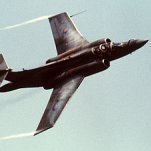


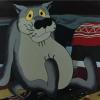


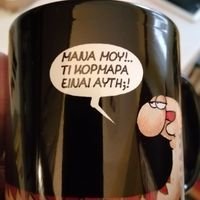
.thumb.jpg.3c5b41eb004e624ff9bdf837868ecbb6.jpg)

